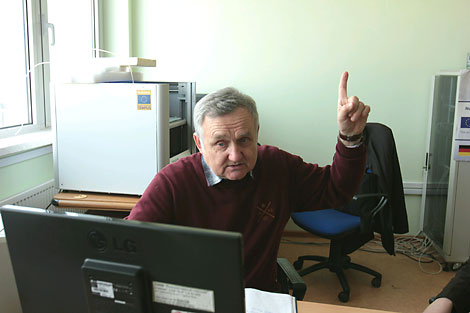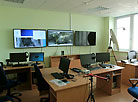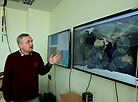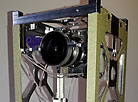The Belarusian State University is preparing the country’s first university nanosatellite for launch

The final tests of the Belarusian nanosatellite will be done in OAO Vityas in Vitebsk. The spacecraft and its launch barrel will be subjected to ten gravities in a centrifuge. The testing will be done after the contract on launching the satellite is signed and the launch date is set. For now the Belarusian State University intends to insert it into orbit in late 2017 or early 2018.
“Our satellite will be piggybacked onto some large satellite. We have not decided yet what country and what space agency will launch it,” explained Vladimir Sayechnikov.
Once the nanosatellite is in orbit, the ground-based flight control center will work 24/7. “The satellite will fly over us about six times per day. The radiovisibility window will be 10-11 minutes at most. We will need personnel on duty to handle telemetry, mission information, stage scientific experiments, process data, evaluate the precision of the satellite’s orientation, build maps of background radiation and the planet’s magnetic anomalies. Students will be involved in all this work,” said the scientific supervisor of the Aerospace Education Center at the Belarusian State University.
Any university and any student will be able to receive the data the nanosatellite will send. Being personally in the flight control center is not required. A small radio receiver plugged into a notebook will suffice. Specialists from the Belarusian State University have developed a dedicated website that allows a huge number of users to acquire data from the satellite. “We would like radio amateurs from all over the world to get involved. We will have a small satellite and limited bandwidth and small connection speeds. If we choose to download data only for ten minutes six times per day, we are not going to have a lot of it. If radio amateurs from all over the planet pitch in, the volume of data will exceed what large satellites can produce. Two projects have been implemented like that – in Canada and Hungary. They have been able to connect up to 2 million users. Can you imagine how much data 2 million users can collect?” wondered Vladimir Sayechnikov.
There are plans to set up a reception network connecting all the Belarusian universities, which will be able to acquire data from this nanosatellite and all the existing educational satellites. “No complicated equipment will be required taking into account the capabilities of the website we have created. For instance, our data reception center gets information from 50 educational satellites,” added the scientific supervisor of the Aerospace Education Center at the Belarusian State University.












